The pre-wedding celebrations of Anant Ambani, son of Indian industrialists Mukesh and Nita Ambani, have captivated the public and the gem and jewellery industry with a rare sight. The spotlight was on Nita Ambani’s one-of-a-kind emerald necklace, accompanied by a ₹53 Crore (Estimate $6,400,000) diamond ring called “The Mirror of Paradise,” sparking widespread discussion and admiration. Nita Ambani, renowned for her impeccable taste in arts and jewellery, wore an emerald necklace valued at approximately ₹500 crore (Estimate $60,000,000). This article aims to consolidate information about this impressive emerald, from its carat weight and natural state to the mining details. It covers aspects from mining, gemmology, and design to consumer interest, ensuring it remains a topic of fascination.
The necklace features two exceptionally large Emeralds central to its design. The larger of the two emeralds weighs estimate 560 carats, while the smaller weighs estimate 303 carats in a recent blog by ‘SupercarBlondie’ anecdotally mentioned that Christie’s Auction House auctioned these emeralds. According to the information from Christie’s website these 2 Emeralds were sold at $870,000 on 8th December 2020. Their estimated price was at $ 200K to 300 K. These emeralds are particularly valued for their vibrant green colour; ones achieved without any treatment get a higher price in the market for their utmost natural state, while the other may need to undergo a few treatments like oil or resin filling, which helps to enhance the clarity of the emeralds and fill the fissures within. Emeralds are part of the beryl species. They get their green colour from trace elements of chromium and vanadium. The intensity of their emerald colour depends on the amount of trace elements within them.

Centerpiece Emeralds
These emeralds are the centerpiece of the necklace worn by Mrs. Nita Ambani in the Image above.
Emeralds are celebrated not only for their vibrant green hue but also for their rarity and the complexity of their extraction, especially the ones that make up the centrepiece. Colombian mines are known for producing some of the finest emeralds in the world, often found in veins within calcite deposits, which require delicate handling to preserve the integrity of the stones. The possibility of being able to mine emeralds of such size is rare because emeralds are brittle and softer than other gemstones like sapphires and rubies. From my previous conversations with emerald miners, Miners usually have to use dynamite to blast the ground to start the whole process of mining emeralds. Emeralds, by their nature, have a lot of cavities and fissures within them, which is why they are more brittle. So, when blasting the ground, it affects the crystal structure, causing cracks, which lead to much smaller sizes, something you will see in the market.
These emeralds were tested by the American Gemological Laboratory (AGL). The Larger emerald 562.79 carats of Colombian origin, with no clarity enhancements, the smaller emerald weighed 303.90 carats of the same origin, with insignificant clarity enhancement. There was a sales room notice mentioning that the smaller emerald will weigh 303.80 due to a slight chip to one corner from an existing fracture of the emerald. This lack of enhancement increases their value significantly, as untreated natural emeralds of such sizes are rare and highly prized in the gem and jewellery community. Their natural characteristics, such as fissures and inclusions, are visible even through photos online and serve as proof of authenticity, adding to the narrative and desirability of each stone.
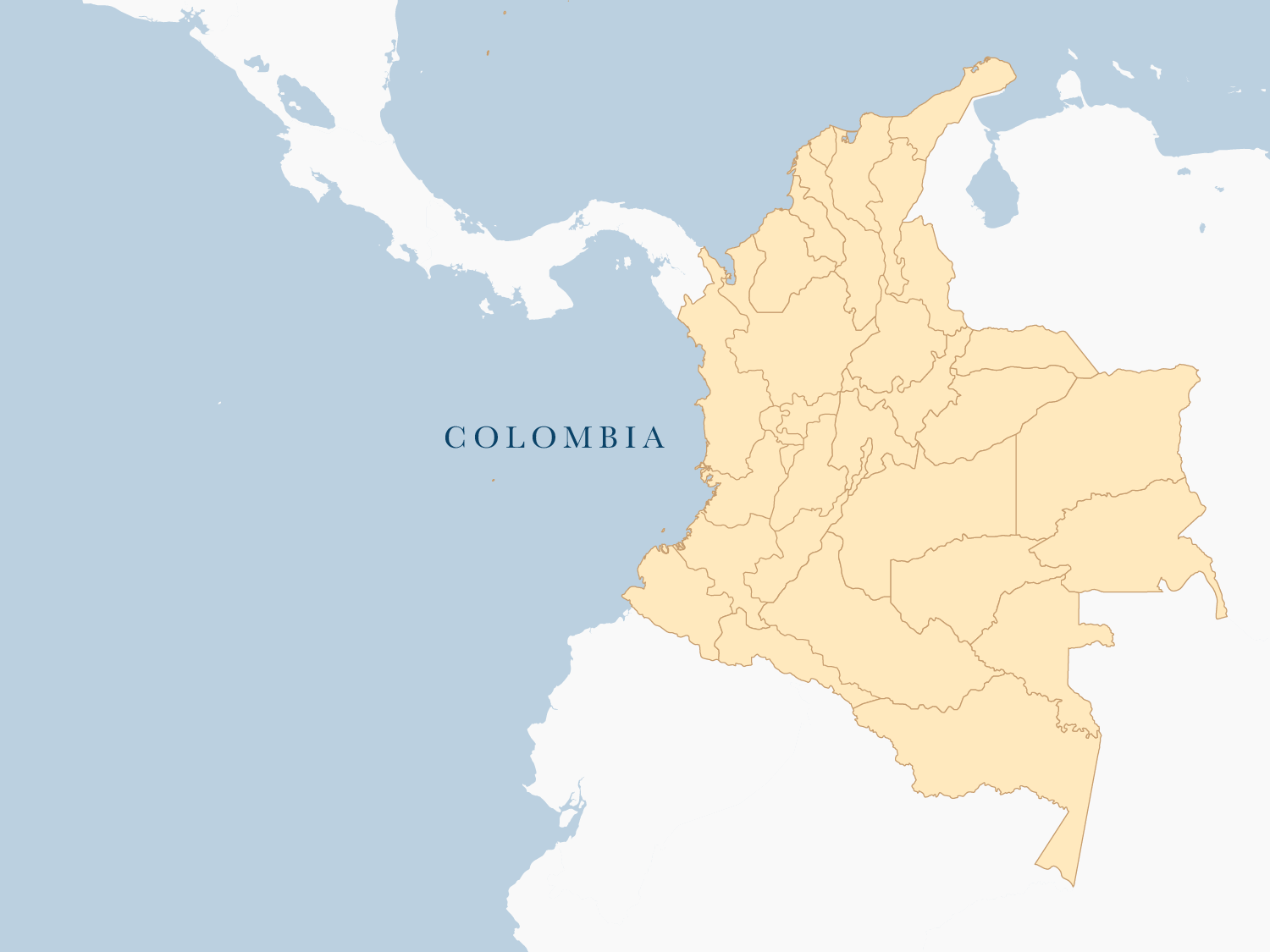
Here are some examples of inclusion that can be seen within Natural Colombian Emeralds.
- Colombian emeralds often contain three-phase inclusions, which consists of three distinct components: a solid material, a liquid, and a gas. These inclusions are formed during the emerald’s growth when all three phases become trapped within the gemstone. The solid phase refers to a solid material enclosed in the emerald, while the liquid phase represents a trapped liquid with viscosities. The gas phase indicates the presence of gas or vapour enclosed within the emerald. The three-phase inclusion is the main inclusion in determining a Colombian emerald, as it is mostly seen in Colombian Emeralds.


- Numerous Pyrite crystals that show a considerable variation regarding shape and size. The pyrite is isolated or arranged in cluster-like formations; they display a typical, golden metallic (Brass Like) luster.
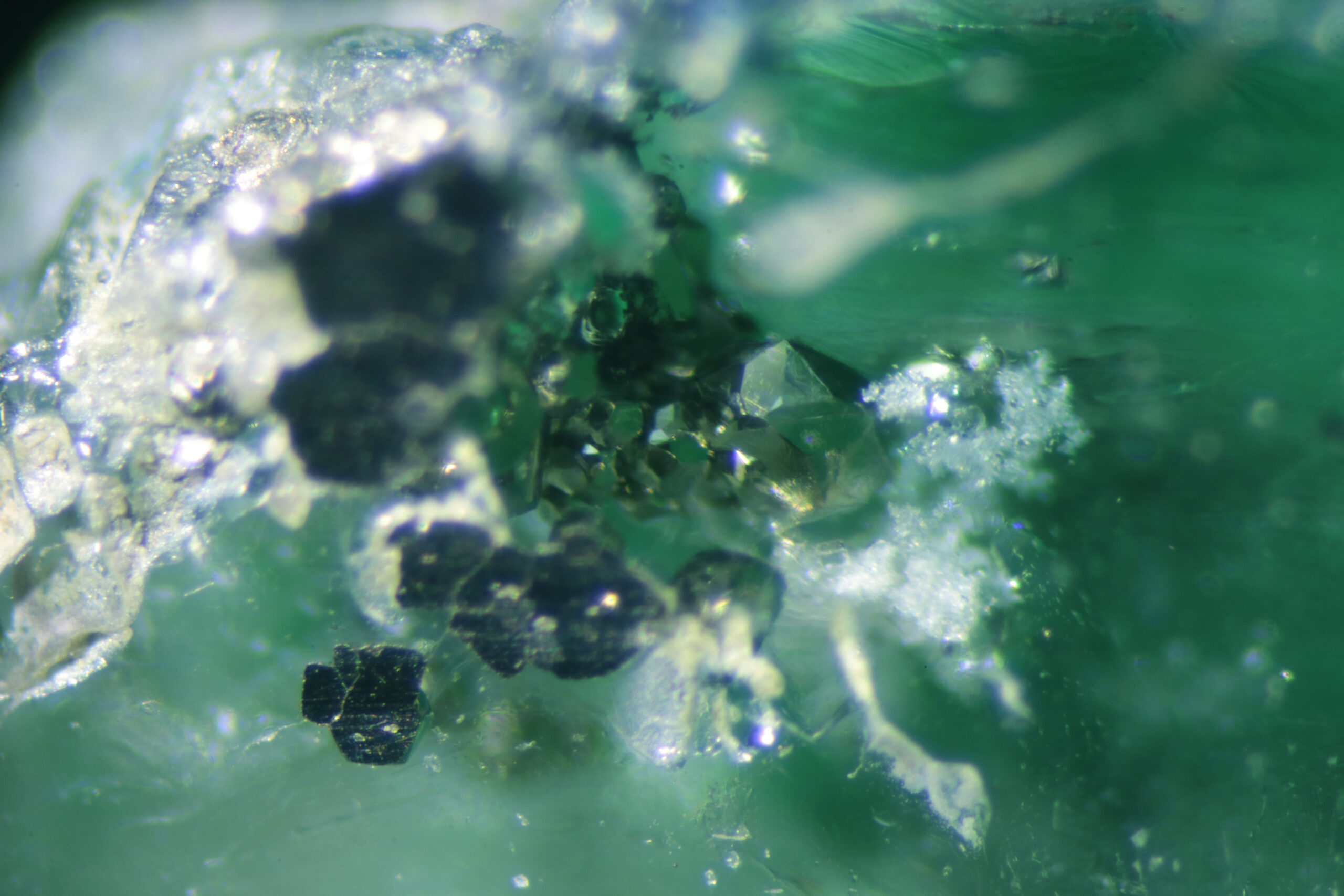

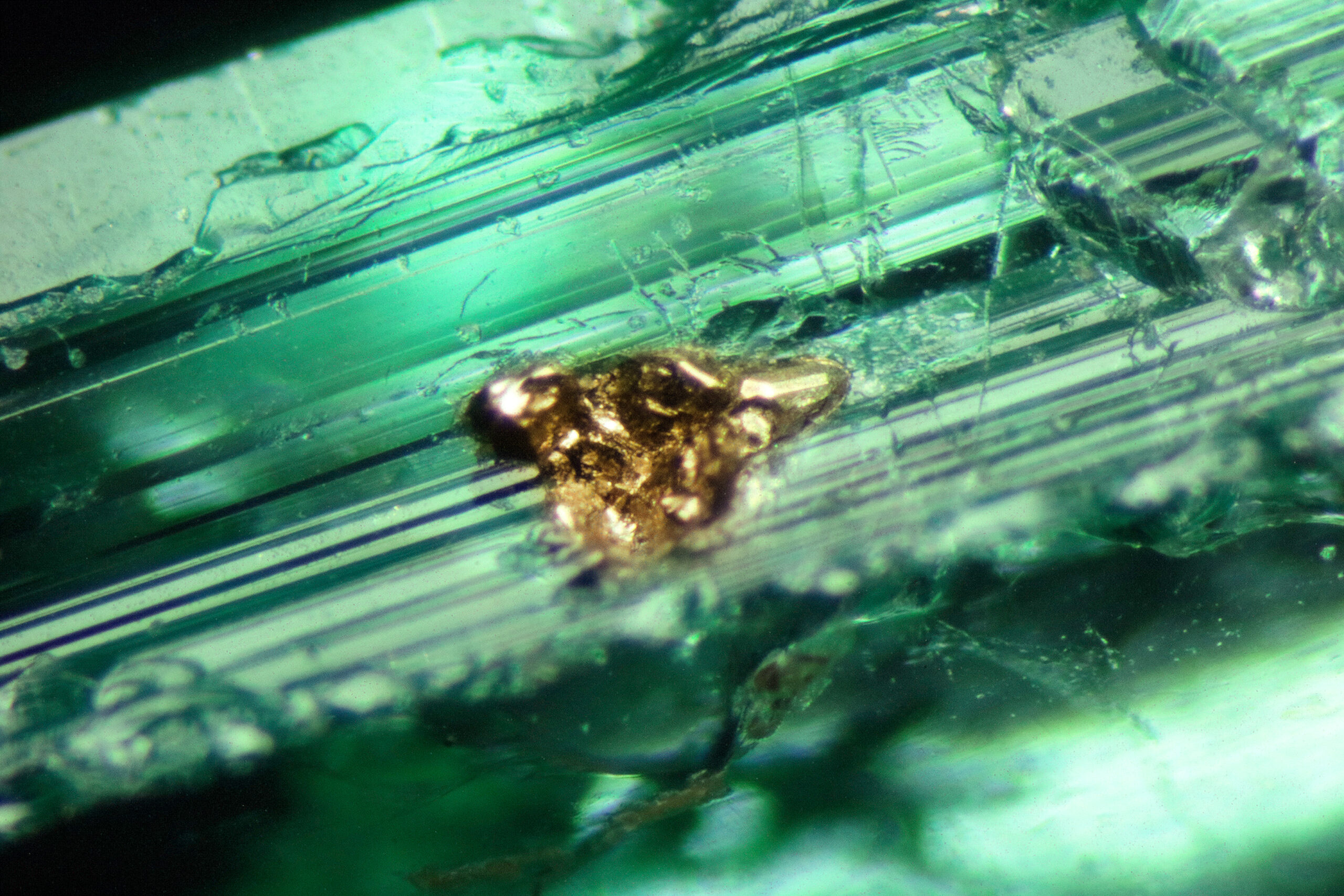
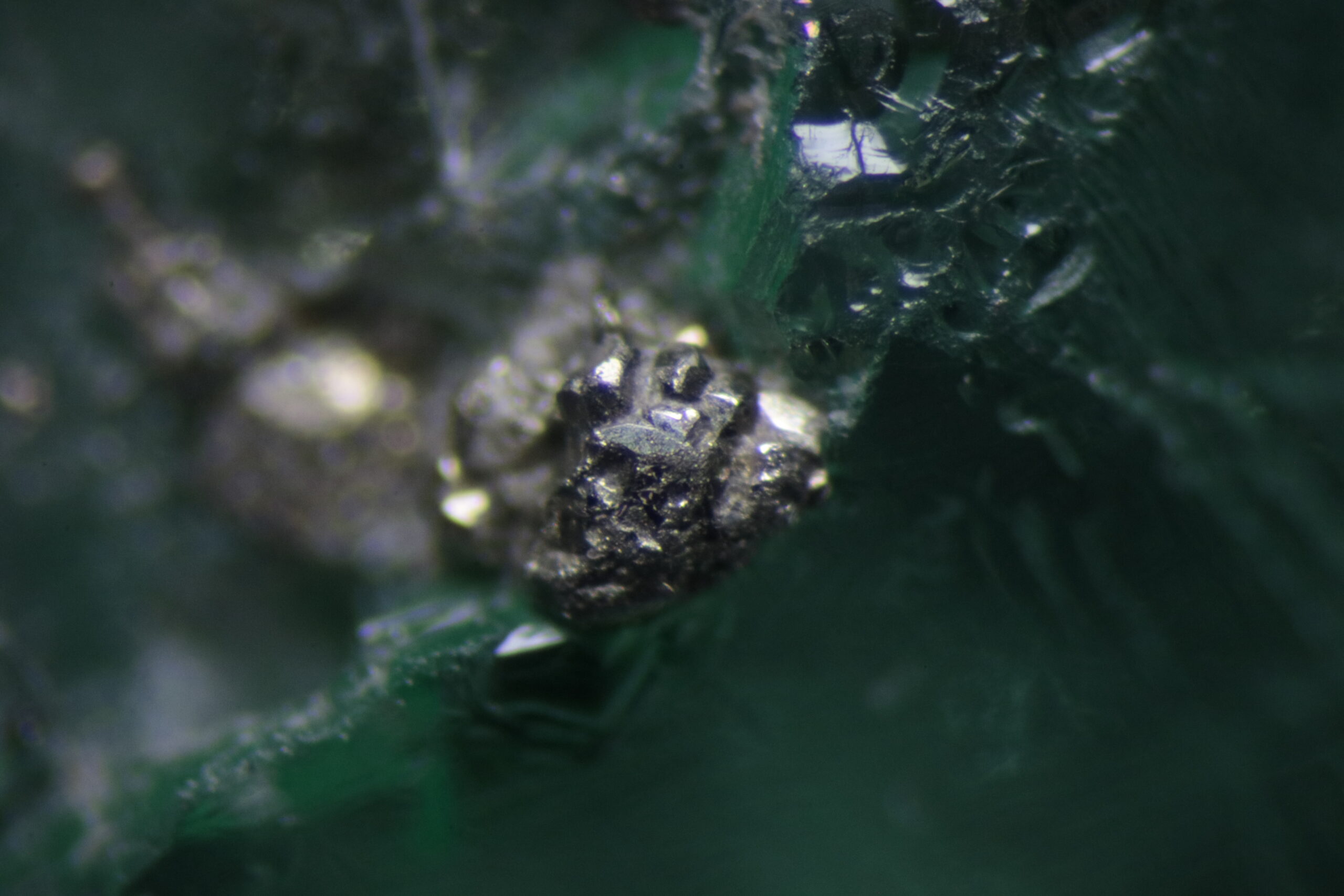
- Colourless- transparent(rare) to greyish white, irregularly shaped crystals. Probably, these belong mostly to the carbonated group. The crystals are concentrated in compact agglomeration or flake-like arrangement.
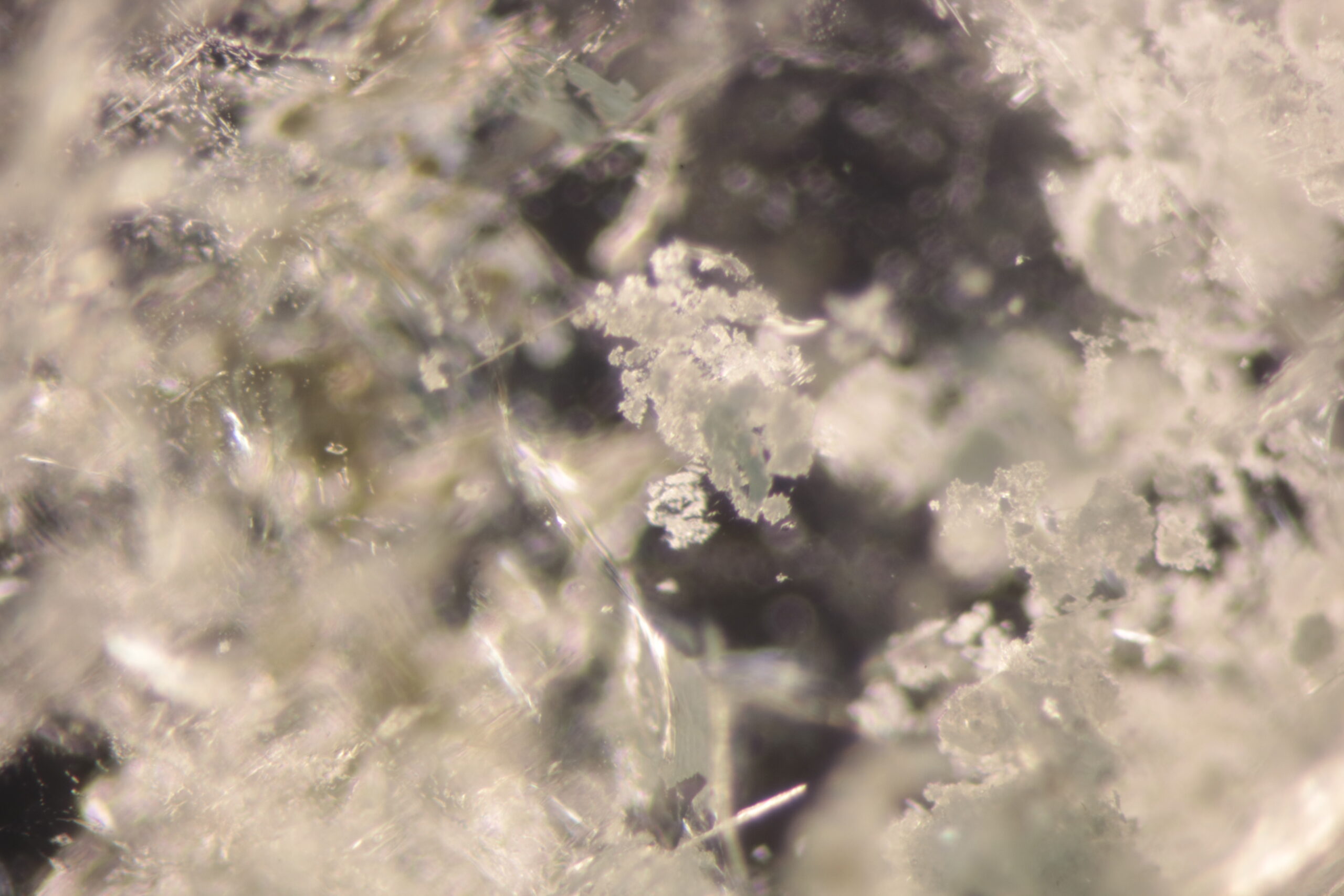
The mastermind behind the creation of this necklace remains a mystery, adding to its allure. However, sources reveal that its making spanned a remarkable three years and involved the expertise of five skilled artisans. This extensive process underscores the meticulous attention to detail and the high level of craftsmanship required to set such large and delicate stones without altering their natural beauty. The necklace was complemented by a stunning pair of Earrings, featuring Asscher-cut solitaires, Colombian emeralds, and brilliant-cut pear solitaires, designed and created by Kantilal Chhotalal, a jeweller with a rich history of serving Indian royalty, further showcasing the artistry and craftsmanship that goes into creating such masterpieces.
This necklace can be compared to historic pieces like the emerald of the Iranian Crown Jewels or Elizabeth Taylor’s famous Bulgari emerald pendant. Such comparisons highlight the rarity and value of Nita Ambani’s necklace and place it within the context of world-class jewellery collections, emphasizing its museum quality and the legacy it represents.
Beyond its gemmological value, the necklace represents a confluence of luxury, tradition, and modern fashion. Nita Ambani’s choice to wear this piece at her son’s pre-wedding bash signifies not only a celebration of personal style but also a profound nod to the cultural importance of emeralds in Indian history, where they are often associated with prosperity, growth, and beauty.
Nita Ambani’s emerald necklace is a personal adornment. It’s a masterpiece that I hope to see in a museum someday, perhaps at the Nita Mukesh Ambani Cultural Centre.
Note:
References
https://vogue.sg/emeralds-jewellery-nita-ambani-necklace/#:~:text=But%20a%20standout%20is%20the,total%20130.77%20carats%20in%20weight.
https://www.kantilalchhotalal.com/
https://www.instagram.com/jpxjewelry/reel/C4Sy_dwOzSs/
https://supercarblondie.com/nita-ambani-necklace/
https://www.instagram.com/reel/C5QgWtRuv0p/
https://www.christies.com/en/lot/lot-6296101

